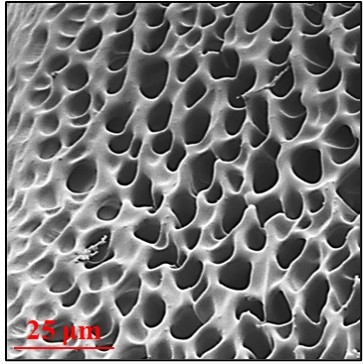外周神经组织将生物电信号从大脑传递到身体其他部位。外周神经的损伤通常会导致慢性疼痛、神经紊乱、瘫痪或残疾。现在,研究人员已经开发出一种可拉伸的导电水凝胶,将来有一天可以用来修复这些类型神经的损伤。他们在ACS Nano上报道了这项研究结果。
外周神经被完全切断的损伤,例如事故造成的深切口,是很难治疗的。一种常见的治疗策略被称为自体神经移植。它是从身体其他部位移走一段外周神经,然后缝在被切断神经的两端。然而,该手术并不一定能恢复神经功能,有时还需要多次后续手术。人工神经移植物与支持细胞相结合的治疗策略也被使用,但通常需要很长的时间神经才能完全恢复。沈群东、王倡春、朱泽章和他们的同事们想要开发一种有效、迅速起作用的治疗方法来替代自体神经移植。为此,他们决定探索导电水凝胶——一种可以传输生物电信号的遇水膨胀的生物相容性高分子。
研究人员制备了一种坚韧但可拉伸的导电水凝胶,其中含有聚苯胺和聚丙烯酰胺。这种交联聚合物具有3D微孔网络,植入后神经细胞可以进入并附着,从而帮助恢复失去的神经组织。研究小组显示这种材料可以通过从蟾蜍身上取下的受损坐骨神经来传导生物电信号。然后,他们将水凝胶植入坐骨神经损伤的大鼠体内。两周后,老鼠们的神经恢复了生物电特性。与未治疗的老鼠相比,它们的行走能力有所改善。研究人员说这种材料的导电性能够在近红外光的照射下得到提高;近红外光可以穿透生物组织,因此用这种方式可进一步增强神经信号传导和恢复。
研究人员获得了中国国家重点研发计划、国家自然科学基金、高校长江学者与创新研究团队计划、37000cm威尼斯优秀博士研究生B计划的资助。

图片出处:改编自ACS Nano 2020, DOI: 10.1021/acsnano.0c05197
美国化学学会(ACS)是由美国国会特许的非营利性组织。ACS的使命是促进更广泛的化学企业和它的从业者为地球和人类的利益。该学会是全球领先的化学相关信息和研究机构,通过其多种研究解决方案、同行评议期刊、科学会议、电子书和每周新闻期刊《化学与工程新闻》提供相关信息和研究。ACS期刊是科学文献中被引用最多、最受信任和阅读最多的期刊之一。ACS本身并不进行化学研究。作为科学信息解决方案的专家(包括SciFinder®和STN®),其CAS部门负责全球的研究、发现和创新。ACS的主要办事处在华盛顿特区和俄亥俄州的哥伦布市。
美国化学学会新闻发布原文链接:
https://www.acs.org/content/acs/en/pressroom/newsreleases/2020/october/a-hydrogel-that-could-help-repair-damaged-nerves.html
论文标题:Conductive Hydrogel for Photothermal-Responsive Stretchable Artificial Nerve and Coalescing with a Damaged Peripheral Nerve
论文链接:ACS Nano 2020, DOI: 10.1021/acsnano.0c05197
附件:美国化学学会新闻发布原文
American Chemical Society>Discover Chemistry>News Releases 2020
FOR IMMEDIATE RELEASE | October 07, 2020
A hydrogel that could help repair damaged nerves
"Conductive Hydrogel for Photothermal-Responsive Stretchable Artificial Nerve and Coalescing with a Damaged Peripheral Nerve"
ACS Nano

A conductive polymer hydrogel could help repair damaged peripheral nerves.
Credit: Adapted from ACS Nano 2020, DOI: 10.1021/acsnano.0c05197
Injuries to peripheral nerves –– tissues that transmit bioelectrical signals from the brain to the rest of the body –– often result in chronic pain, neurologic disorders, paralysis or disability. Now, researchers have developed a stretchable conductive hydrogel that could someday be used to repair these types of nerves when there’s damage. They report their results in ACS Nano.
Injuries in which a peripheral nerve has been completely severed, such as a deep cut from an accident, are difficult to treat. A common strategy, called autologous nerve transplantation, involves removing a section of peripheral nerve from elsewhere in the body and sewing it onto the ends of the severed one. However, the surgery does not always restore function, and multiple follow-up surgeries are sometimes needed. Artificial nerve grafts, in combination with supporting cells, have also been used, but it often takes a long time for nerves to fully recover. Qun-Dong Shen, Chang-Chun Wang, Ze-Zhang Zhu and colleagues wanted to develop an effective, fast-acting treatment that could replace autologous nerve transplantation. For this purpose, they decided to explore conducting hydrogels –– water-swollen, biocompatible polymers that can transmit bioelectrical signals.
The researchers prepared a tough but stretchable conductive hydrogel containing polyaniline and polyacrylamide. The crosslinked polymer had a 3D microporous network that, once implanted, allowed nerve cells to enter and adhere, helping restore lost tissue. The team showed that the material could conduct bioelectrical signals through a damaged sciatic nerve removed from a toad. Then, they implanted the hydrogel into rats with sciatic nerve injuries. Two weeks later, the rats’ nerves recovered their bioelectrical properties, and their walking improved compared with untreated rats. Because the electricity-conducting properties of the material improve with irradiation by near-infrared light, which can penetrate tissues, it could be possible to further enhance nerve conduction and recovery in this way, the researchers say.
The authors acknowledge funding from the National Key Research and Development Program of China, the National Natural Science Foundation of China, the Program for Changjiang Scholars and Innovative Research Team in University, and Program B for Outstanding Ph.D. Candidate of Nanjing University.
The American Chemical Society (ACS) is a nonprofit organization chartered by the U.S. Congress. ACS’ mission is to advance the broader chemistry enterprise and its practitioners for the benefit of Earth and its people. The Society is a global leader in providing access to chemistry-related information and research through its multiple research solutions, peer-reviewed journals, scientific conferences, eBooks and weekly news periodical Chemical & Engineering News. ACS journals are among the most cited, most trusted and most read within the scientific literature; however, ACS itself does not conduct chemical research. As a specialist in scientific information solutions (including SciFinder® and STN®), its CAS division powers global research, discovery and innovation. ACS’ main offices are in Washington, D.C., and Columbus, Ohio.
To automatically receive press releases from the American Chemical Society, contact newsroom@acs.org.
###
Follow us:
Media Contact
ACS Newsroom
newsroom@acs.org
100720-artificial-nerve